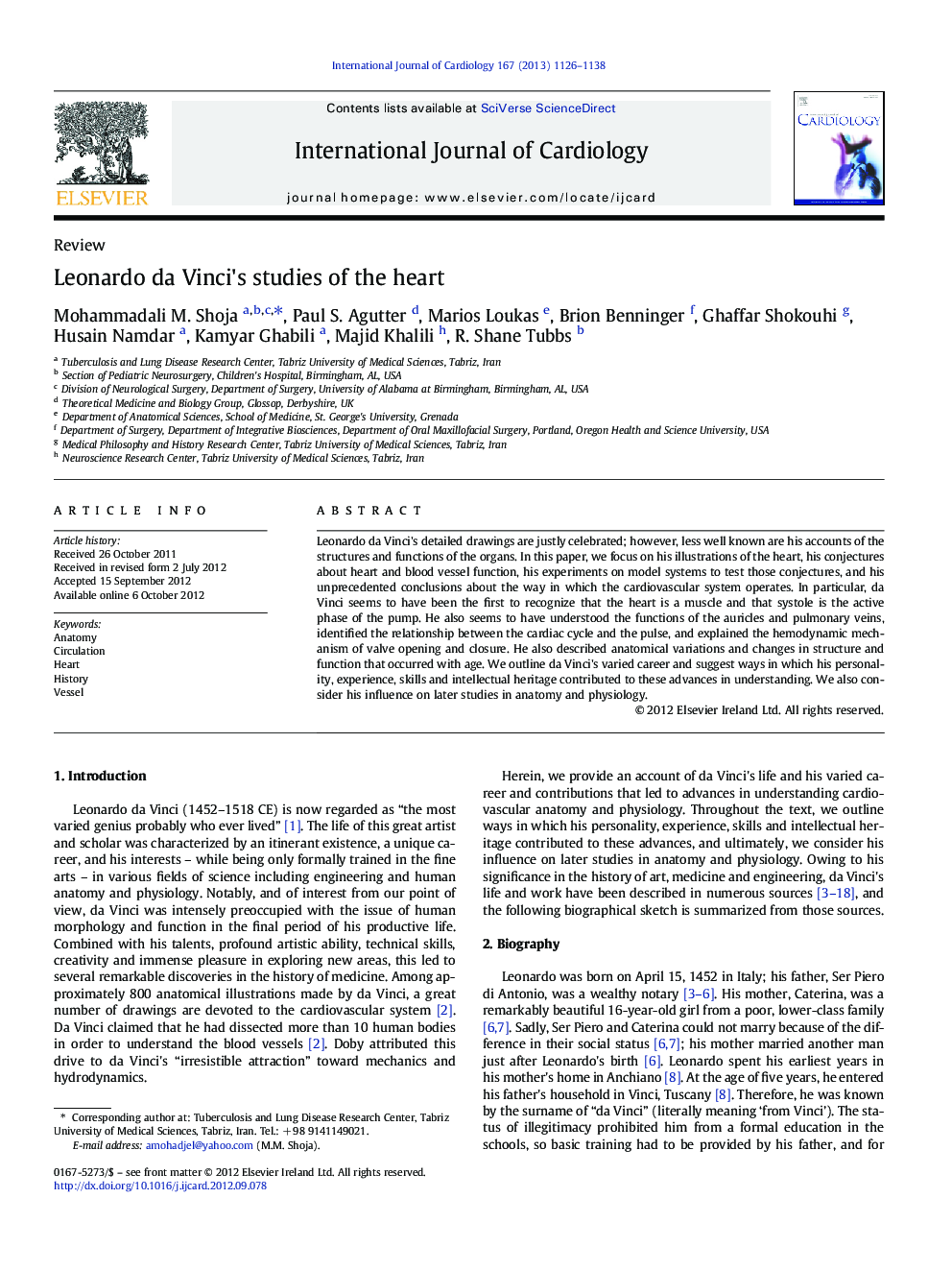| Article ID | Journal | Published Year | Pages | File Type |
|---|---|---|---|---|
| 5975443 | International Journal of Cardiology | 2013 | 8 Pages |
Leonardo da Vinci's detailed drawings are justly celebrated; however, less well known are his accounts of the structures and functions of the organs. In this paper, we focus on his illustrations of the heart, his conjectures about heart and blood vessel function, his experiments on model systems to test those conjectures, and his unprecedented conclusions about the way in which the cardiovascular system operates. In particular, da Vinci seems to have been the first to recognize that the heart is a muscle and that systole is the active phase of the pump. He also seems to have understood the functions of the auricles and pulmonary veins, identified the relationship between the cardiac cycle and the pulse, and explained the hemodynamic mechanism of valve opening and closure. He also described anatomical variations and changes in structure and function that occurred with age. We outline da Vinci's varied career and suggest ways in which his personality, experience, skills and intellectual heritage contributed to these advances in understanding. We also consider his influence on later studies in anatomy and physiology.
